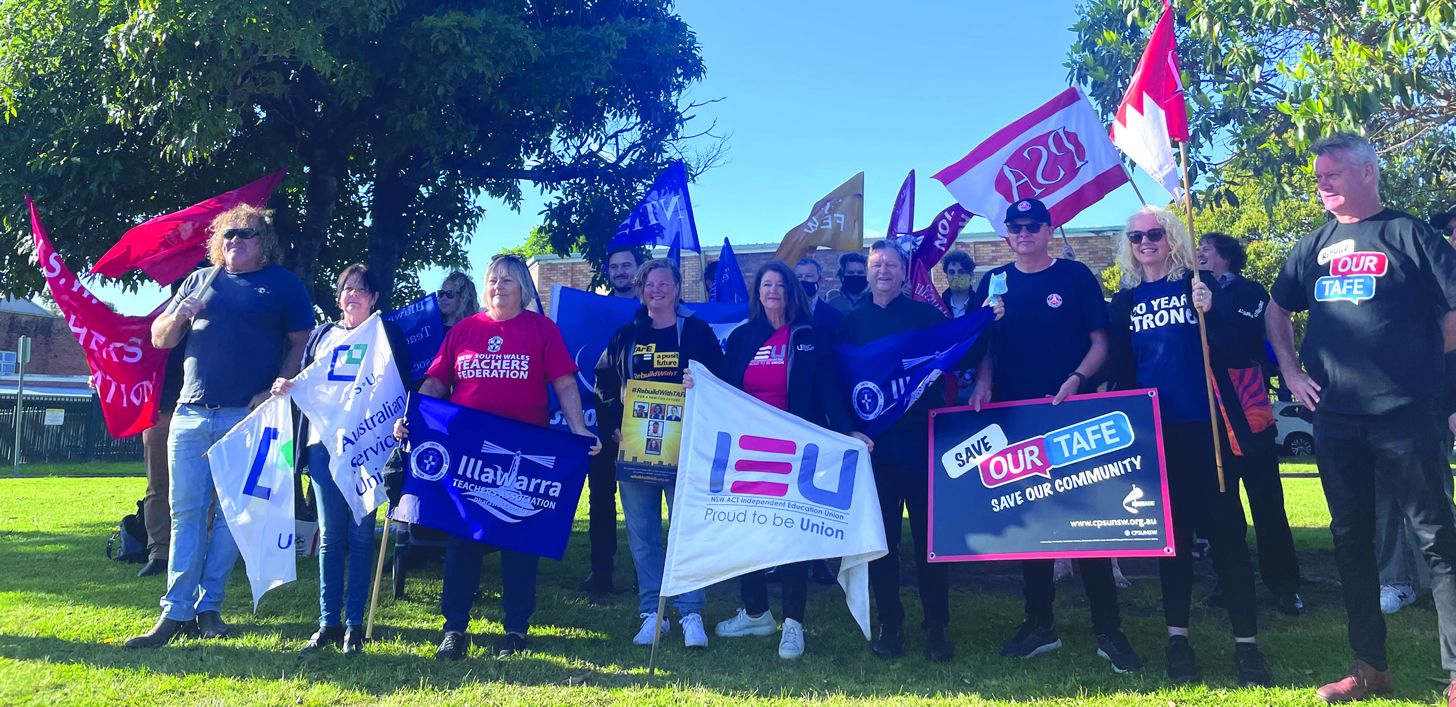
A new report explains how public sector employment can be the upside of a regional downturn. When governments constrain public sector wages, they constrain everyone's. Here’s why.






































































































































How the public sector impacts your pay
2021 November Newsmonth



A new report explains how public sector employment can be the upside of a regional downturn. When governments constrain public sector wages, they constrain everyone's. Here’s why.

During the past two years, as regional NSW experienced a sharp economic downturn resulting from drought and bushfires then the COVID-19 pandemic, which employment sector provided much-needed economic input and stability? Mining? Manufacturing? Agriculture? None of these. It was the public sector.
On 15 November, the IEU attended the launch of a new report into the surprisingly deep impact of public sector employment on the South Coast, Illawarra and Capital regions of NSW. The report was commissioned by the South Coast Labour Council.
“We’ve sought to measure just how much of an impact these workers, from nurses and teachers and public service workers and firefighters and many others have actually had on our local economy whilst everyone else has essentially been frozen out of the economy,” said the Secretary of the South Coast Labour Council, Arthur Rorris.
Sustaining the south coast
The report found that public sector jobs in regional NSW represent a greater proportion of the labour market compared to the cities. “In Greater Sydney, public sector employment consists of about 13 percent of the labour market; in Wollongong and Kiama it’s over 20 percent of employment,” said the report’s author, Associate Professor Martin O’Brien of the Centre for Human and Social Capital Research at the University of Wollongong, at the launch.
Importantly, the report found that public sector employment is countercyclical. “The impact or contribution of public sector employment to regional economies increases in size, importance and dimension in times of economic downturn and crisis,” the report says.
O’Brien pinpoints the direct effect: “Public sector employees on average spend about 80 percent of their income in local areas, so that’s going to local businesses, which has a stimulus effect,” he said.
On the flipside, when the business cycle and private sector are in an upswing, providing more employment and economic activity, the relative importance of the public sector subsides. But in regional NSW, the private sector has been in a downturn for more than two years.
Stability over cycles
In a nutshell, public sector employment is economic stability provided by government policy and it is not subject to the vagaries of the business cycle.
“Schools don’t close. Hospitals don’t close. Police stations don’t close. We’re always there. It’s a constant. And our wages, obviously, are a constant in the community,” a school teacher from Shellharbour says in the report.
Even when school grounds were closed, teachers and school staff adapted quickly, and learning continued online.
Pay caps and staff shortages
What does this mean for the independent education sector? Public sector conditions have a knock-on effect.
“Public sector wages have been constrained by a 2.5 percent pay increase cap,” said IEUA NSW/ACT Branch Acting Secretary Carol Matthews. “In 2020, many public servants were shocked to find their pay rise was going to be 0.3 percent, and that is just unfair given the work those employees have done during COVID. It reflects abysmally on the NSW Government.”
Matthews noted that when public sector wages are constrained in one area it impacts related areas. “And that’s where our union comes in,” she said. “If there’s an artificial ceiling of 2.5% on public sector teachers’ wages, our members really have to struggle to get past that as well. It’s not just an academic theory, our members face those constraints.”
One effect is teacher shortages. As NSW Teachers Federation Deputy President Henry Rajendra said at the launch, “If nothing is done about salaries and working conditions now, schools will run out of teachers in the next five years.”
Matthews agreed. “All sectors of education are currently facing teacher shortages for a few reasons,” she said. “One is wages. Clearly wages must move. And the IEU supports the Teachers Federation campaign for significant increases. We too will be having a major campaign early next year and expect to see industrial action over wages. The other main reason for shortages is the overwhelming workloads.”
Importance of early learning
Matthews also emphasised the role of IEU members in early learning centres, many of which are government funded. “Our teachers in early learning centres have kept working during a really difficult period and kept everyone else at work,” she said.
“There are still COVID cases in early learning centres and schools. The difficulty of this work and the contribution these employees are making must be recognised by us all.”
And that recognition must come not just in the form of thanks, but in fair wage rises that reflect the increasing workloads, skills and professionalism throughout the entire education sector.